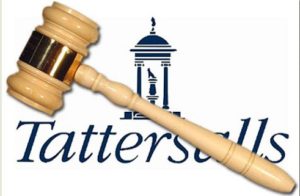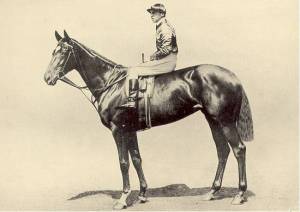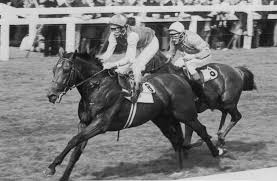There can be no denying the fact that competition between two sales companies could be stimulating for the thoroughbred breeding industry. A rival’s challenge could stimulate a company to achieve better service and better results, and ultimately both parties will strive harder to attract more clients.
However, the recent announcement that two Ready To Run Sales will be held on one weekend (November 1st, 2nd) is a difficult decision to understand. To hold two sales over one weekend may well result in major sales “fatigue” and may lead to buyer apathy towards one of the two events – a result which would ultimately benefit neither the sales companies nor the breeders nor the buyers.
The impending clash of sales dates can only be a disadvantage for all involved, with breeders unable to participate in both, while many buyers will be forced to take sides in what is becoming an increasingly bitter war. In contrast, the world’s leading sales companies, by and large, space their sales apart, which seems to serve both vendors and buyers better.
In 2014, North America’s two major yearling sales, Fasig Tipton’s and Keeneland’s September Yearling Sale, hold their major auctions in two different months. Fasig Tipton hosts two sales, in July and August, while Keeneland conducts its massive September Sale over two weeks in September.
Australia’s big sales companies, Magic Millions and William Inglis, conduct a number of sales during the year. MM hold two major yearling sales – in January and June respectively, while Inglis conduct their premier event, the Easter Yearling Sale, in April. The Inglis Ready To Run Sale takes place in October, while its rival company hosts a 2YOs in training sale a week before that.
The UK’s principal sales companies, Goffs and Tattersalls, host their premier sales, the Orby Sale and October Yearling Sale, a week apart, which allows international buyers to attend both events, without bypassing one or other sale.
So, have two sales companies hosting similar sales days apart or on the same weekend proved beneficial previously? And if so, who has benefitted?
Five years ago, due to the running of the Breeders Cup World Championships, Fasig Tipton and Keeneland, both of whom had catalogued mixed sales in November, made a joint announcement regarding changes to their sales’ calendar. Keeneland, set to hold its annual 13 day November Breeding Stock Sale, changed the starting date to November 10th – the same day which its rival company chose to hold its one day Selected Mixed Sale. That year, Keeneland’s Breeding Stock Sale’s figures stayed fairly even, with the average dropping slightly from $61,462 to $57, 477, while Fasig Tipton’s November Sale averages showed a shocking decrease from $772, 297 to almost half that – $361, 313.
In 2004, Tattersalls and Goffs had an intense dispute over the sales dates of the Orby/Challenge Yearling Sales and October Yearling Sale (Book 1). Both Tattersalls and Goffs were keen to host their respective sale on the week following the running of Europe’s premier race, the Prix de’l Arc de Triomphe. The two companies eventually reached a joint decision to host the two sales a week apart, a decision which appeared to be beneficial to all concerned. Ever since then, the two sales have successfully been held one week apart.
One can only hope a similar agreement can be reached in South Africa, preventing an all out war, detrimental to all those involved in the breeding industry.
St Leger – a classic still relevant?
Next Saturday sees the running of Britain’s oldest classic, the St Leger. First run in 1776, the St Leger used to rate as one of the premier racing events in the world and continues to provide an interesting spectacle.
The race was won in 2013 by subsequent Gold Cup winner, Leading Light – one of three sons of Montjeu to have won the event. However, like all long distance races (the Leger is contested over 2932 metres), the St Leger’s prestige has dropped in recent years. Few Derby winners, and fewer 2000 Guineas winners, contest the Leger- third leg of the British Triple Crown.
Nijinsky II was the latest horse to win the Triple Crown, when successful in 1970, and since then the St Leger has been won by four other previous British classic winners. The last Derby winner to win the Leger was Reference Point (in 1987), while the most recent Oaks heroine to triumph at Doncaster was User Friendly in 1992.
Camelot, a beaten favourite in 2012, was the last horse to compete in all three legs of the British Triple and, in 2014, just one of the 21 entries (Kingston Hill) is a Group 1 winner. This is a woeful turnout for a race with a tremendous history.
In former years, the St Leger would often unveil future champions – both on the track and at stud. From 1902 to 1904, the race was won by Triple Crown hero Rock Sand, and two of the greatest fillies in history, Sceptre and Pretty Polly. All three would exert considerable influence at stud.
Bayardo and Swynford, victorious in 1909 and 1910 respectively, would both go on to become champion sires – as did the 1918 winner, Gainsborough (whose Leger winning son Hyperion would head the sires list on six occasions). Fairway, winner of the Leger in 1928, was a truly great racehorse, whose other major wins included the Eclipse Stakes, and the Champion Stakes (twice). The founder of a major sire line, Fairway would head the British sires list four times.
However, the race’s success at uncovering champion sires would appear to lie in the past. Most recent St Leger winner to head a major sires premiership was Nijinsky II (North America in 1986), while the most recent to top the British general sires log was Never Say Die (in 1962). Of the last ten winners of the race, only two (so far) have gone on to capture a major Group 1 race following their St Leger win – the above mentioned Leading Light being one, and 2008 hero Conduit (winner of both the King George and Queen Elizabeth II Stakes and dual Breeders Cup Turf).
Looking at the entries for Saturday’s race, one can only hope that this year’s is won by a horse who adds further to the record of a once great classic.














